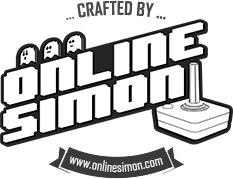We may not use Graph papers so much these days, but ten years ago, you had these things in every classroom, laboratory, and library—even on the soccer field, somewhere. Well, it’s about time we unravelled the mystery behind this special grid-lines paper thing and understand why it’s so important to civilisation.
Graph papers are the ever-present math class necessities. A graph paper, or a grid paper or a coordinate paper or (last one) a squared paper is a paper printed with neat lines combining to make a regular grid. In simple words, graph papers are writing paper with fine lines… When you mix a graph up with numbers, it morphs into a sophisticated yet visually appealing calculation.
We use the lines within graphs to plot graphs of functions; lay out experimental data and to draw calculative curves. Every mathematics and engineering class, as well as laboratory settings, has one of these. Graph papers are typically found in notebooks or available as loose-leaf paper.
History of Graphs | Who Made this Stuff?

Graph paper, also known as graphing paper or millimeter paper, is a type of writing paper that is printed with fine lines making up a regular grid. The lines are often used as a guide for plotting mathematical functions or experimental data and drawing two-dimensional graphs. The concept of graph paper can be traced back to the early 17th century, when mathematician Roger Cotes used a piece of squared paper to help him plot and study geometric shapes.
Graph Paper has had a huge influence on Architectural Design. The very first commercially published graph paper (known as ‘coordinate papers’ at the time) are typically attributed to Dr Buxton of England in 1794.
In 1801, a French mathematician named Joseph-Diaz Gergonne began publishing a journal called "Annales de mathématiques pures et appliquées," which included a section devoted to problems that could be solved using graph paper. This helped to popularise the use of graph paper among mathematicians and scientists.
Nearly a century later, a distinguished mathematician, Edward Haskell Moore, of the University of Chicago, advocated for the use of ‘squared lines paper’ in high school and university settings. As time passed, the previously termed ‘squared paper’ evolved into the ‘graph paper’ we know today.
What do we know about Graphs?
We know graphs come in different formats for various uses. To mention a few, here are the variations of graph papers that are available in modern world:
- Quad Paper: Often used in U.S and Canada, quad paper graphs have two, four or five squares to the inch. It is termed ‘quadrille paper’ in French, to mean ‘small-square’… brittle things.
- The Dot Grid Paper: You can recognise these papers with dots at intersections; no grid lines. These are used as bullet journals, suitable for keeping something like a monthly or weekly calendar.
- Engineering Paper: Also called the Engineer’s Pad, these graph papers may have up to ten squares per inch. Every page has unprinted margins, so that when they are scanned or photocopied, the grid lines do not appear. Engineering papers are commonly used in US and Canada for classwork and homework.
Other formats of graphs—you probably won’t use half of these in your lifetime— are Millimetre paper, hexagonal paper, 3D graph paper, logarithmic paper, normal probability paper, and polar coordinate paper.
Graph Types and What They Do

It is essential to use the correct graph type based on the data presented. If independent and dependent variables are numeric, use line diagrams or scattergrams; if only the dependent variable is numeric, use bar graphs; for proportions, use bar graphs or pie charts.
- Scattergrams
A scattergram shows the relationship between two variables, establishing basis for consistent interaction. The type of graphs you use to analyse something like Coke and Pepsi. - Line Graphs
Like a scattergram, a line graph represents continuous variables such as time and temperature. Don’t hold it close to the clock or the freezer though. Remember its only paper. - Bar Graphs
A bar graph may have horizontal and vertical columns. The greater the length of graph bars, the greater the value. Bar graphs compare one variable against several variables. - Histograms
Also called the frequency distribution graph, this special bar graph resembles column graphs, but without the gaps in-between columns. These represent data from the measurement of a continuous variable; for example, comparing the standard of living between various individuals of a population. - Pie Chart
This shows classes or groups of data in direct correlation to the whole data set. The pie stands for all the data, with each slice representing a different class or group within the whole. Learn more about the history of the Pie Chart. - Box Plots
A box plot may be horizontal or vertical. They display statistical summaries of one or more variables, such as medians and quartiles. - Radar Chart
Radar charts visually display multivariate data on a circular grid, with each axis representing a different variable. Data points along these axes are connected to form a polygon, facilitating quick comparisons across multiple variables. Commonly used in business and sports analytics, radar charts offer a succinct and intuitive snapshot of patterns and strengths across different dimensions. - Artists Grid
Artists grids serve as a foundational tool for creating precise and proportionate artworks. By dividing the canvas into smaller, manageable sections, grids allow artists to accurately transfer and scale their designs, ensuring that each element is in perfect relation to the whole. This technique is essential for maintaining perspective, symmetry, and detail across various art forms, from classical paintings to modern digital designs.
Final Words for Graph Users
50 Math Tricks That Will Change Your Life: Mentally Solve the Impossible in Seconds
Now, a graph is only as good as the user. Common errors may occur such as duplicated text or information within graphs, lack of legends, wrong graph choice, or improper graph plotting. Therefore, label your raw data and ensure they are consistently placed before applying to your graph.
Do you know you can have printable graphs at your fingertips?
Yes, you can. With gridpaper.co.uk, we provide unlimited access to various graph types, different page sizes and alternate orientation. Simply select your options, then download and/or print your unique graph paper. It’s that simple!
